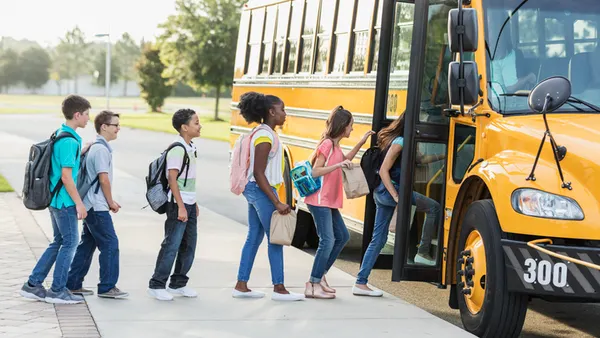Dive Brief:
- The experiences of six urban school districts demonstrate how the responsibilities of principal supervisors can shift toward better supporting school administrators in their roles as instructional leaders, according to a new report from researchers at Vanderbilt University and Mathematica Policy Research.
- The districts participated in the four-year, $24 million Wallace Foundation’s Principal Supervisor Initiative, which has focused since 2014 on moving the position from one focused on compliance and operations to one that assists school leaders in improving student learning.
- The districts revised job descriptions, reduced the number of principals assigned to supervisors, provided training and reorganized some central office functions to help the district-level administrators be successful in these new roles. “Principal supervisors are a potential point of leverage for supporting and developing principals, but relatively few districts have invested in such efforts,” the authors write, adding that the changes implemented in the districts “demonstrate that it is possible for districts to make substantial, meaningful changes to the principal supervisor role.”
Dive Insight:
As districts continue to reimagine the role of principals to support effective instruction, the lessons from this diverse mix of districts will be helpful. The six participating districts were Broward County Public Schools in Florida, Baltimore City Schools, the Cleveland Metropolitan School District in Ohio, the Des Moines Public Schools in Iowa, the Long Beach Unified School District in California and the Minneapolis Public Schools.
The average number of principals assigned to supervisors was also reduced from 17 to 12, and districts focused more on creating opportunities for these networks of principals to collaborate and learn together. The participating districts also gave some non-instructional duties to other central office personnel so that the supervisors could focus more on teaching and learning. But this was a challenge because it left some principals not sure who to call with certain questions and the supervisors still reported being required to attend "non-essential meetings," the study says.
“This change in the nature of the relationships between principals and supervisors was due not only to the quantity of time spent together, but also to the qualitative shift in the nature of their interactions, toward a greater focus on instructional leadership,” the authors write.
Some of the districts also created apprenticeship programs for leaders aspiring to be principal supervisors, which can help ensure that future supervisors will enter the positions with the preparation to function in these new roles. Moving forward, the researchers suggest that the districts develop a common definition of instructional leadership, and help supervisors find a balance between responsibilities at the central office and time spent in the schools with principals. New and experienced supervisors also need high-quality training — a lesson that can be valuable for any district making these changes.
Future reports from the researchers will look at the effects of the initiative on principals’ performance and a comparison of principal supervision in the sample districts with a national sample of urban districts.






 Dive Awards
Dive Awards






